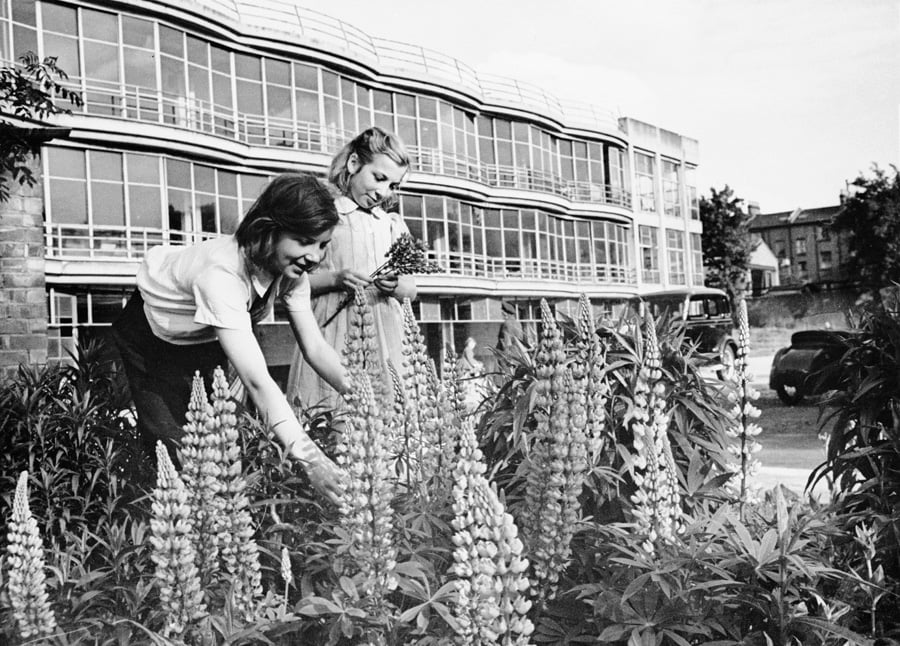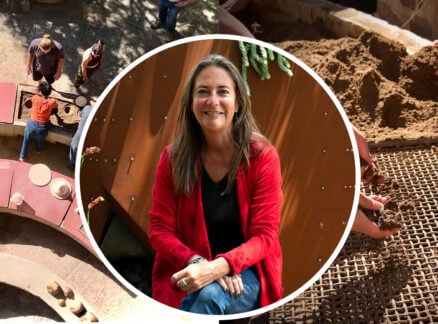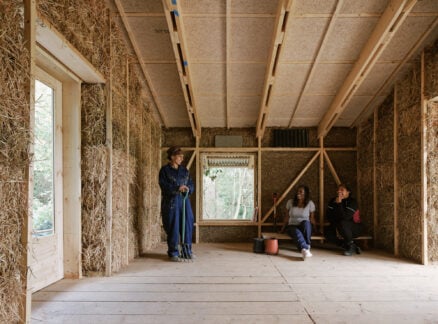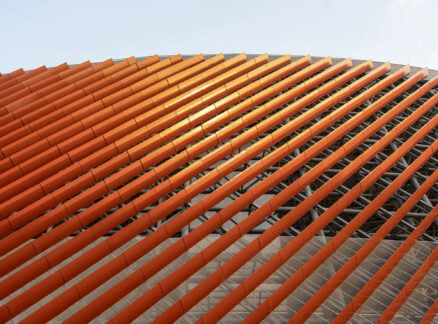
October 10, 2018
When Architecture Became Healthy: Examining More than 100 Years of Design and Wellness
A new show, on view at London’s healthcare-focused gallery, the Wellcome Collection, chronicles the history of the built environment and our wellbeing.

What appears to be the remnants of an outsize model airplane line the blue wall of an exhibition space at London’s Wellcome Collection. While these large wooden panels seem punctured with random, abstract holes, they are actually construction leftovers of Roger Stirk Harbour + Partners’ Global Clinic, a modular structure to deliver healthcare in remote locations across the world created for the nonprofit Doctors of the world.
The clinic, which slots together with 298 CNC-milled plywood pieces, is the climax of Living with Buildings, the Wellcome Collection’s major new exhibition examining the oft-overlooked relationship between wellness and the built environment—“how architecture has shaped healthcare and how healthcare has affected architecture,” in the words of curator Emily Sargent.
The lightweight, mobile clinic creates a sharp contrast with the images of Victorian slums that open the show. Largely chronological, Living with Buildings begins with Charles Booth’s famous poverty maps of London from the late-19th century—an early sociological study which intricately documented the relative wealth of households across the city.
Booth’s study spurred philanthropists and the state to reconsider the relationship between the body, psychology, and architecture. As the exhibition continues, the relationship is developed through midcentury graphic works by Abram Games and Erno Goldfinger espousing the health benefits of modern architecture.

A later section looks at “healing buildings” such as the Peckham Pioneer Centre in south London, a light-filled Modernist structure with a program that encouraged physical activity and self care. A particular highlight here is a contemporary video installation by Ilona Sagar, Correspondence O, which considers the history of the center within the framework of contemporary wellness culture (this alone makes the exhibition worth a visit).
Another curatorial highlight is a small, yet sensitively conceived, section focused on the Grenfell Tower tragedy, which left 72 people dead and triggered PTSD in an estimated 11,000. Rather than fixate on images of the blaze and its aftermath, the display documents the history of the Grenfell site: its pre-tower conditions, housing construction, blog postings that warned of the coming disaster, and—finally—video clips of post-tragedy protests. It’s an intelligent and context-focused chapter in an exhibition which otherwise relies a little too heavily on single objects in glass containers and over-familiar images.

Upstairs, the Mobile Clinic is thus a bit of a saving grace—a new commission by the Welcome Collection and its parent, the biomedical research organization Wellcome Trust. Displayed with two full-sized prototypes and one completed clinic structure (each measuring 22 feet long), the focus here is on the practicality and simplicity of construction that the open source design can provide. “It needed to be something that could be set up quickly, was secure, confidential space and had a longer life than tents,” explains Brian Aldridge of Doctors of the World.
Rogers Stirk Harbour + Partners, working with BuroHappold Engineering and ChapmanBDSP, created easily-handled wooden pieces that slot into one another to create a latticed structure. Gaps within this frame can be filled with simple insulation materials and covered with an outer skin.
But the clinic is more than a thing to be looked at: Over the course of the exhibition, the structure will be visited by representatives of Doctors of the World and offered out for use across the 70 countries. Thanks to the open source design and CNC construction, the clinic need only travel via email.
The Mobile Clinic represents a fitting thrust into the future, and a continuation of Wellcome’s own place in the history of healthcare and, as they say, a place “for the incurably curious.”
You might also like, “6 Things We Learned When Designing for People with Disabilities.”


















